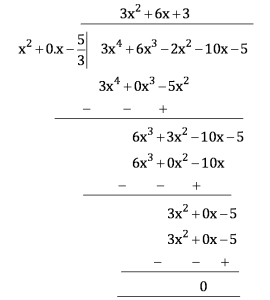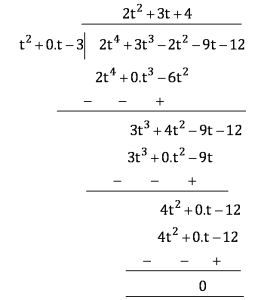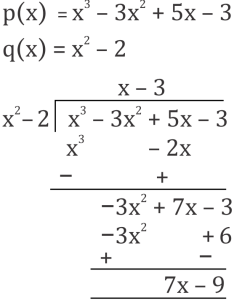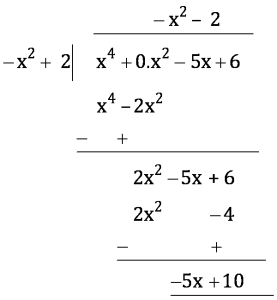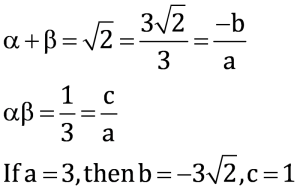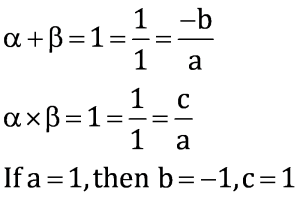Question 5:
Give examples of polynomial p(x), g(x), q(x) and r(x), which satisfy the division algorithm and
(i) deg p(x) = deg q(x)
(ii) deg q(x) = deg r(x)
(iii) deg r(x) = 0
Answer:
According to the division algorithm, if p(x) and g(x) are two polynomials with
g(x) ≠ 0, then we can find polynomials q(x) and r(x) such that p(x) = g(x) × q(x) + r(x),
where r(x) = 0 or degree of r(x) < degree of g(x)
Degree of a polynomial is the highest power of the variable in the polynomial.
(i) deg p(x) = deg q(x)
Degree of quotient will be equal to degree of dividend when divisor is constant ( i.e., when any polynomial is divided by a constant).
Let us assume the division 6x2 + 2x + 2 by 2.
Here, p(x) = 6x2 + 2x + 2
g(x) = 2
q(x) = 3x2 + x + 1 and r(x) = 0
Degree of p(x) and q(x) is the same i.e., 2.
Checking for division algorithm,
p(x) = g(x) × q(x) + r(x)
6x2 + 2x + 2 = 2 (3x2 + x + 1)
= 6x2 + 2x + 2
Thus, the division algorithm is satisfied.
(ii) deg q(x) = deg r(x)
Let us assume the division of x3 + x by x2,
Here, p(x) = x3 + x
g(x) = x2
q(x) = x and r(x) = x
Clearly, the degree of q(x) and r(x) is the same i.e., 1.
Checking for division algorithm,
p(x) = g(x) × q(x) + r(x)
x3 + x = (x2 ) × x + x
x3 + x = x3 + x
Thus, the division algorithm is satisfied.
(iii) deg r(x) = 0
Degree of remainder will be 0 when remainder comes to a constant.
Let us assume the division of x3 + 1by x2.
Here, p(x) = x3 + 1
g(x) = x2
q(x) = x and r(x) = 1
Clearly, the degree of r(x) is 0.
Checking for division algorithm,
p(x) = g(x) × q(x) + r(x)
x3 + 1 = (x2 ) × x + 1
x3 + 1 = x3 + 1
Thus, the division algorithm is satisfied.


